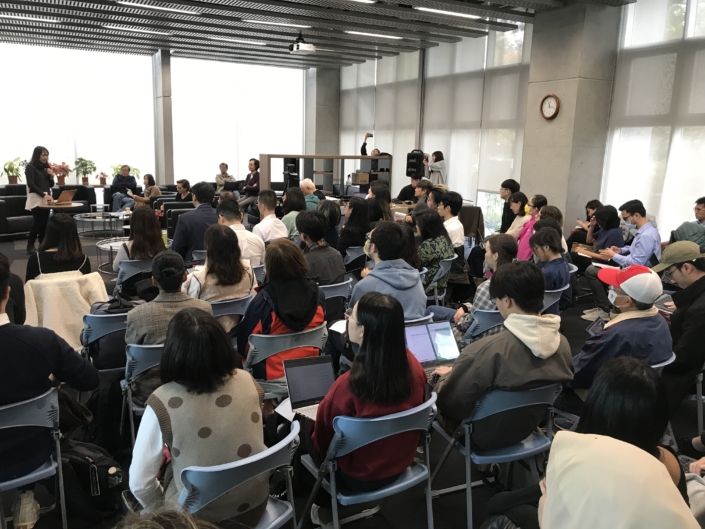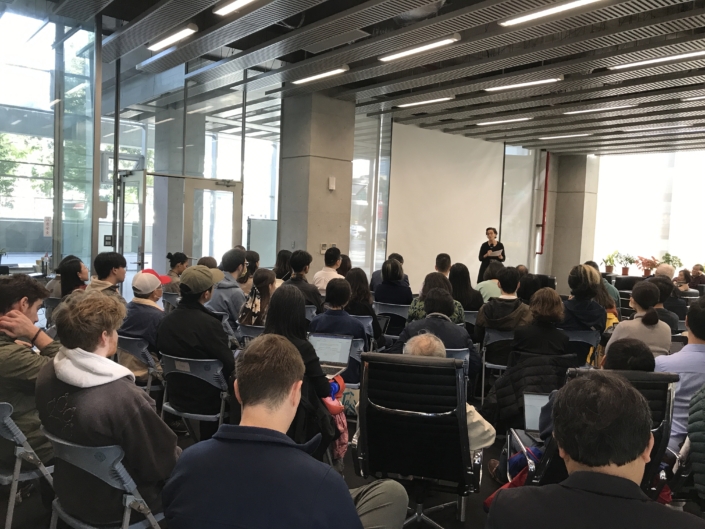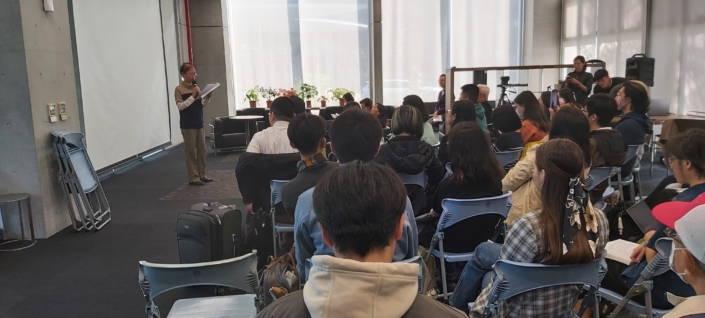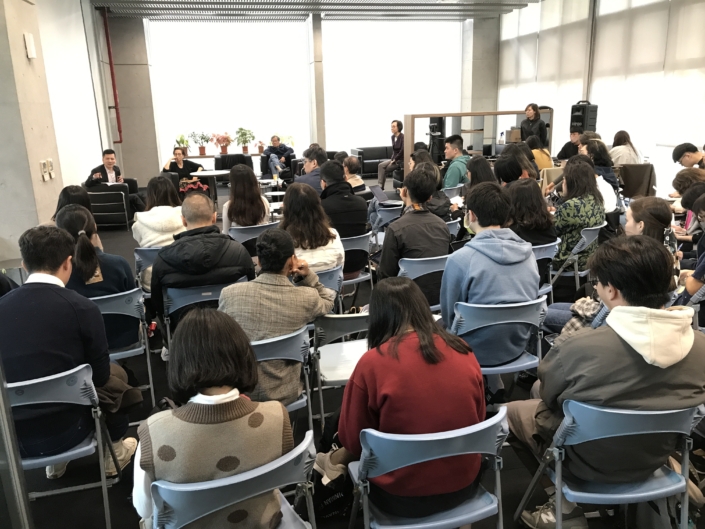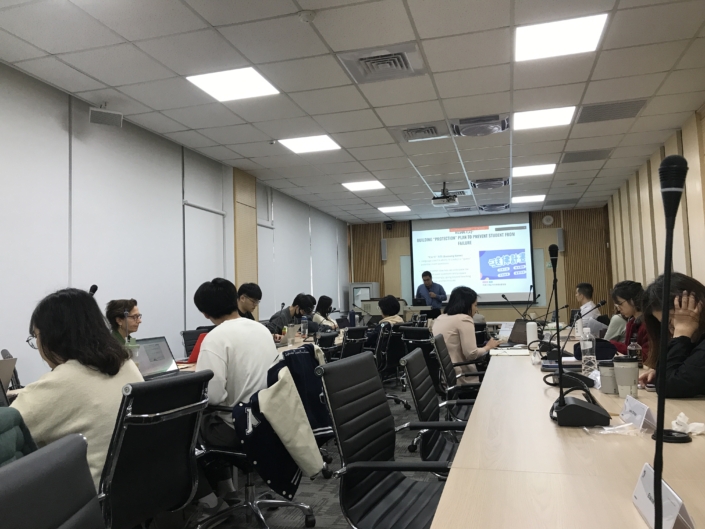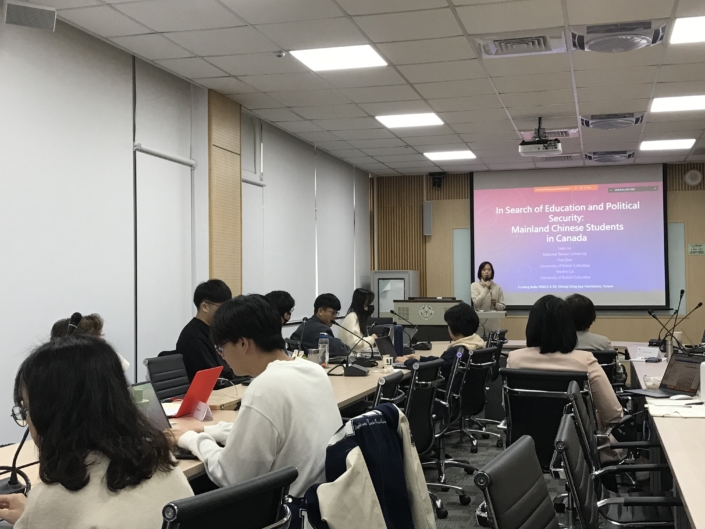Hybrid Transnational Social Protection in Global Asia: (Re)constructing Safety Nets across Borders
This conference opened with Professor Peggy Levitt’s keynote speech. She pointed out that in the fast-changing and increasingly diversified world of globalization, individuals and governments are facing more challenges and finding current social protection insufficient. Therefore, individuals and families integrate and leverage collective resources to negotiate with citizenship status and national policies to better protect themselves in the migration process. Such measures, referred to as transnational social protection (TSP) or even hybrid transnational social protection (HTSP) by Professor Levitt, not only provide migrants and their families with protection but also share the responsibility of the government. Thus, the roles of non-state actors, including the third sector and private sector, as mediators between the state and the individual, have become increasingly important. However, the strength and effectiveness of transnational social protection networks are determined by the class and resources of the individuals involved and thus may reinforce and reproduce inequality between people and among nation-states. Therefore, understanding who the winners and losers are under the emerging transnational and hybrid transnational social protection systems is crucial, as it enables us to see how inequalities are redistributed and take appropriate measures to mitigate harm.
In the first session of this conference, Karen LIAO discussed how Filipino workers in low-wage manufacturing industries obtain transnational social protection mechanisms overseas through formal and informal channels. This mechanism involves the actions of the state, market, and social networks. She saw the repatriation system as a protection measure provided by the Philippine government. However, illegal migrants or those who cannot afford the fees occurring in the system cannot utilize this formal protection resource. In such cases, migrant communities serve as a second layer of protection. She pointed out that the concept of transnational social protection can help us analyze how migrants utilize formal and informal resources, but we also need to consider the differences between formal assistance and assistance that migrants can seek on their own in our analysis.
Nana Oishi compared East Asian countries such as Japan, South Korea, and Taiwan with Australia, Canada, and the United States. She found that East Asian countries in general are more friendly to both permanent and non-permanent foreign residents in various aspects of protection such as health, childcare, and access to public education. However, hierarchy existed in their social protection systems, with citizens having better protection than permanent residents, permanent residents better protected than skilled immigrants, and skilled immigrants better shielded than non-skilled immigrants, with irregular migrants being the least protected.
Chengshi Shiu explored changes in the social networks of Mumbai migrants in Thailand during the COVID-19 pandemic. Due to the lack of the government’s involvement, Mumbai migrants have formed network organizations and established medical organizations in schools to provide health diagnosis services for Mumbai people, addressing the shortage of local official medical resources. Additionally, teachers at schools played a role in communicating with Thai officials, and the third sector provided relevant services. These unofficial assistance efforts might even help the migrants’ home country. His research emphasized the role of networks and organizations in providing social support and the importance of cooperation between the non-governmental sectors in developing transnational social protection measures.
📖Session Two
Elaine Ho and Wen-Ching Ting focused on the connection between multidirectional exchange of care relationships, temporality, and life course of Burmese domestic caregivers in Singapore. In Singapore’s aging society, care for the elderly, at times some basic medical treatments, often fell on the shoulder of foreign domestic caregivers. They sometimes had to take care of the elderly’s other family members, leading to excessive responsibilities and risks for migrant workers. Before departure, migrant workers relied on informal intermediaries and community networks for protection. After arriving in Singapore, assistance was then provided by local migrant networks and non-governmental organizations. Upon returning home, migrant workers improved their lives through skills enhanced via formal training. They found that social enterprises in Singapore had proposed new elderly care models that provided nursing facilities and emotional support in a communal living environment to ensure that domestic caregivers received companionship. Such practices or skills might also be brought back to the home country by returning migrant workers. Finally, they called for reflection on whose care needs were considered first when both parties or multiple parties (such as elderly people or migrant workers in the host country) required social protection, whose rights were compromised, and what kind of inequality was manifested in this process.
Andy Scott Chang investigated Indonesian labor migrants who moved to Taiwan and Singapore, pointing out that most migrant workers face inadequate social welfare systems in their home countries. Yet, upon entering the host country, they were excluded from public participation due to a lack of citizenship status. While these migrants had developed their own protection mechanisms, the instability of employment conditions and the differing benefits and social protection provided by employers made these protection mechanisms relatively fragile and unstable. He believed that states should focus on the disadvantaged position of migrant workers in terms of their status and design relevant welfare measures for their exit strategies to develop a broader and fairer transnational social protection network.
Yasmin Ortiga explored the transnational social protection measures experienced by Filipino nurses and cruise ship workers during the COVID-19 pandemic through analysis of government documents, media reports, meeting records, online seminars, and interviews. Due to the geographical definition of borders and the intricate and low-paying nature of cruise ship work, cruise ship workers “onboard” rather than “within borders” found it difficult to receive assistance from the state during the pandemic. Instead, they received protection from the private sector—namely, cruise companies. However, this protection from private entities was interrupted upon the ship’s arrival at port or upon return to the home country. These shifts or interruptions in individual social protection responsibilities due to labor and geographical location, along with the differences in protection provided by both the private sector and the government, made the transnational social protection network of migrant workers unstable and precarious. This demonstrates the moral responsibility and importance of cooperation between the private sector and the government in developing transnational social protection measures.
Language proficiency is a crucial step in obtaining immigration qualifications, especially for international students. Kenneth Chen investigated the possibility of the commercial sector providing transnational social protection through a case study of language tutoring centers for international students. Through in-depth interviews, online forum observations, and participatory observations at two tutoring centers, it was found that these centers build students’ support networks. However, these centers inadvertently fostered invisible segregation and boundaries between students, as students’ economic status influence their opportunity to access the resources provided by these centers.
Lake Lui examined how Chinese students in Canada obtained transnational social protection for themselves and their families amidst a highly uncertain political and economic context. By pursuing education in Canada, which is highly internationalized and commodified, students can gain wider recognition in the labor market, increasing their chances of participating in transnational labor markets and potentially acquiring dual citizenship, thus enjoying dual transnational social protection. However, this approach is not without risks; obtaining permanent residency or citizenship in the host country may result in the disconnection of their social networks in China, affecting their relationships with relatives and possibly forfeiting access to social protection in China.
Yi-chun Chien used the theoretical frameworks of welfare states, transnational social protection, and border control to explore the social protection mechanisms for transnational care workers in East Asian countries amid the context of aging societies. By comparing Taiwan and South Korea, she found that South Korea provided migrant workers more adequate residency rights protection than Taiwan. However, South Korea had stricter controls based on the ethnic background of migrant workers. Chien suggested that the formation and adjustment of migrant worker policies were organic processes and introduced the concept of a developmental migration state, where immigration policies served as solutions for political, economic, and social issues (such as population decline) in Asian countries.

